Accelerate Success with AI-Powered Test Automation – Smarter, Faster, Flawless
Start free trialCode Coverage is an important metric in software testing. Let’s dive in to it –
Software testing assesses application quality. Do we need to assess testing quality as well? Yes, the test strategy, assets, and practice have distinct quality aspects. Some of the aspects of testing quality are listed below:
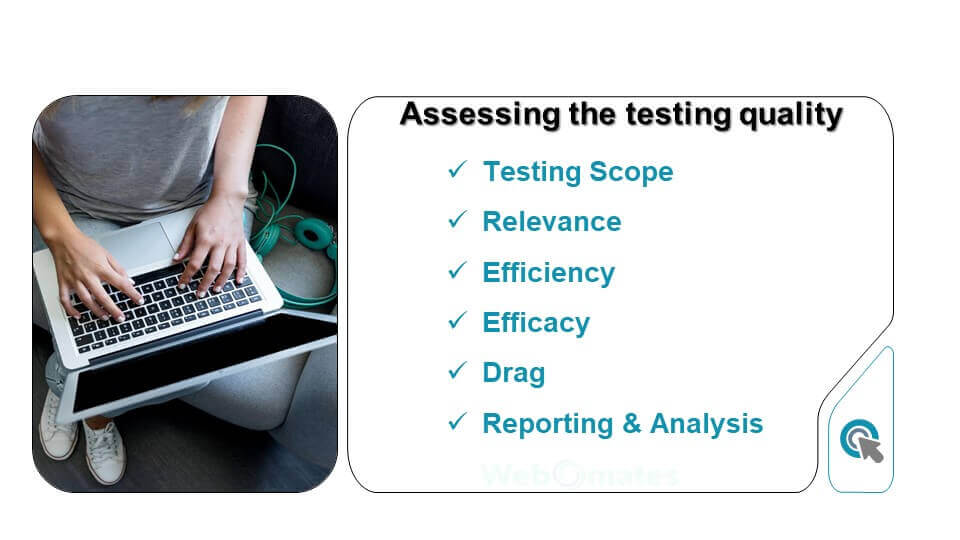
- Testing Scope: The depth and breadth of the application areas covered and test scenarios covered.
- Relevance: Significance of the areas covered during testing and the defects found.
- Efficiency: Result and test output in terms of defects as per the time spent.
- Efficacy: Defects found per test effort (creation, maintenance, execution, analysis).
- Drag: The time spent holding a release while it is being tested, non-tester time invested in test asset creation and review.
- Reporting and Analysis: Clarity of defect reports, meaningful analysis.
This article focuses specifically on the quality of application scope. The methods we can use to assess scope are threefold:
- Requirements traceability: Mapping of application features, functions, use cases, and or/scenarios to test cases.
- Test artifact review: Manual review of test suites, test cases, test data, and applied judgment.
- Code coverage: Automated assessment of application coverage.
These three methods are complementary and should be used together.
Code coverage has the advantage of being objective since it is provided by a computer and cannot be disputed or subject to opinion. Furthermore, the heavy lifting is done by the computer, though a little labor is required to set it up using the tools available.
So code coverage is an important mechanism for assessing one aspect of test quality. It provides several types of quantitative metrics at various application code hierarchies, as well as qualitative data – displays of annotated source code, showing lines exercised and not exercised.
What is Code Coverage?
In simpler words, “Code coverage is software metrics for the number of lines, branches, and conditions of code exercised during the execution of your test suite.”
Any line of code that has not been validated is potentially a ticking time bomb waiting to go off. In a way, code coverage is a preemptive measure to find issues before the code goes to production. Additionally, code coverage is extremely vital for understanding parts of the code that are rarely executed, such as code for handling exceptional and atypical scenarios.
Good Code coverage is the result of well-defined QA Ops practices and is your safety net that prevents disasters. Inculcating good design, execution, and quality process from the onset is the way to go.
Code Coverage Criteria
There are multiple criteria used by developers and test engineers to ascertain the code coverage. The most commonly used are listed below.
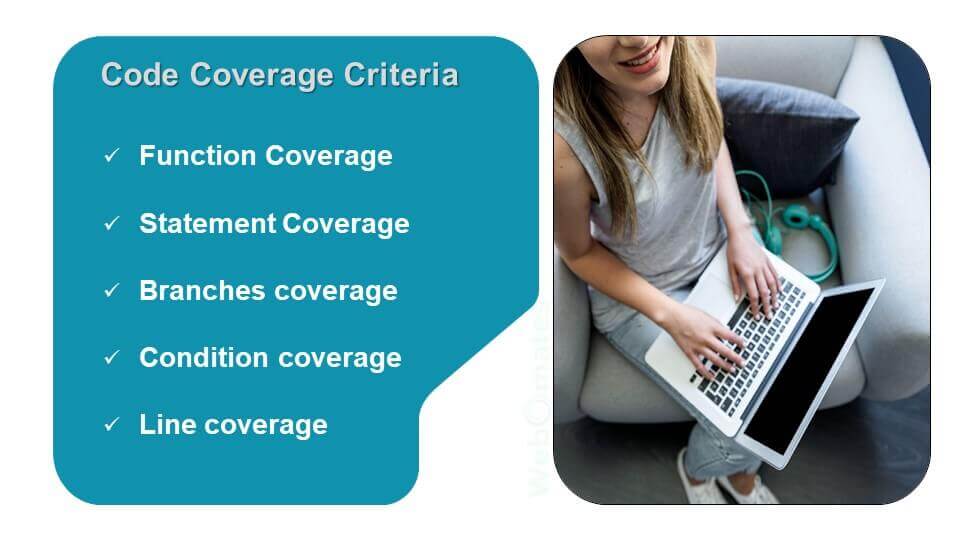
- Function coverage: The number of functions that have been called.
- Statement coverage: The number of statements that have been executed.
- Branches coverage: The number of the branches of the control structures, like if-then, that have been executed.
- Condition coverage: The number of Boolean sub-expression tested for a true and a false value.
- Line coverage: The number of lines of source code that have been tested.
Besides these, depending on the type of product Finite State Machine coverage, transition coverage, register toggle coverage, etc. are also considered while calculating code coverage.
Value of Code Coverage
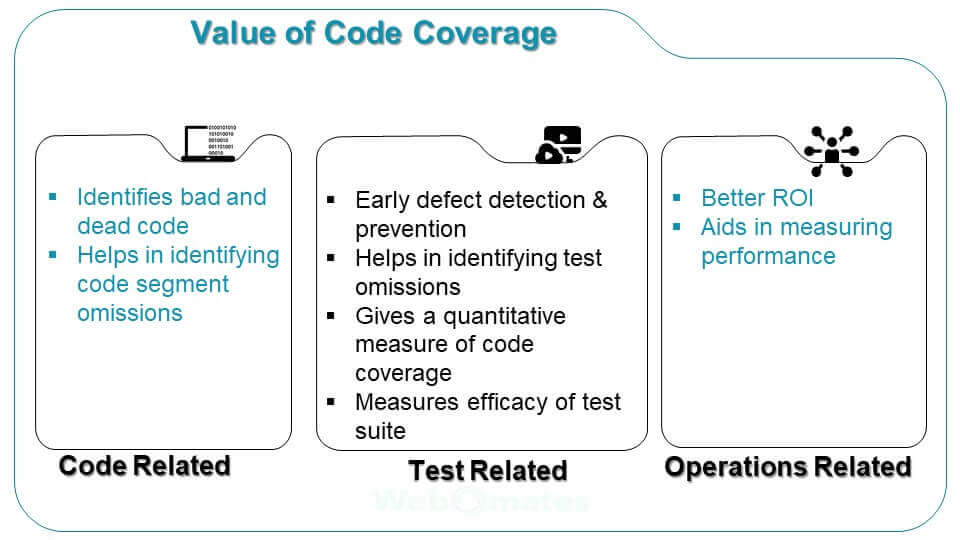
- Identifies bad and dead code: Code coverage analysis points out unused legacy code which can be removed to keep the code clean. It also helps in improving coding practices by pointing out loopholes.
- Helps in identifying code segment omissions: Code coverage helps in identifying the code segments which may not be executed just because the conditions were not “right”. It is imperative to test every segment to improve the quality to prevent any surprise bugs.
- Early defect detection and prevention: Early defect prevention helps in managing your technical debt better. We have covered test analytics and its value in detail in our blog “Intelligent Analytics with AI-based test automation”. Read it to understand how defects discovered late in the project life cycle can create havoc.
- Helps in identifying test omissions: Code coverage aids in creating new test cases to increase coverage by identifying untested code segments.
- Gives a quantitative measure of code coverage: Quantitative measure of code coverage is a number that raises a red flag if not in line with the set target. It sets the wheels of analysis and damage control in motion.
- Measures efficacy of test suite: Code coverage helps in analyzing how comprehensively a software is verified and how well the test suite was designed to cover all possible test scenarios.
- Better ROI: With reduced defects during UAT, the quality goes up leading to higher customer satisfaction and better ROI.
- Aids in measuring performance: With higher code coverage, minuscule defects escape and reach production, nevertheless, overall performance is increased.

Achieving Code Coverage
Code coverage requires language-specific libraries, IDE plugins and command-line tools that instrument the code, measure it and generate reports. It can be done pre-deployment during a build, or post-deployment at runtime.
With modern platforms, the setup of code coverage is all in the DevOps domain. Developers do not have to change the application code itself to support code coverage assessment. Only changes to build, pipeline and application deploy definitions are required.
Code coverage is typically measured as part of a unit test run with extra tooling. The test run could be executed on a developer’s workstation, e.g. in a developer’s IDE plugin, or local build. A unit test run could also be executed on a centralized build system, in a post-compilation stage, that is part of a build and deploy pipeline.
Code coverage may also be done as part of functional, integration and system test run. The application must be run in a special instrumented mode. It works like this:
- In legacy platforms the code had to be compiled and specially packaged before deployment whereas in modern platforms (e.g. recent Java, .NET, Python, NodeJS) can simply run with attached agents or started with special wrappers.
- After the testing completes, the coverage data is extracted from the coverage agent attached to the application.
- The coverage data is converted to machine-readable format for further analysis and/or to human readable format, typically viewable in a browser.
In both contexts, the reports can be viewed centrally by a CI/CD tool or analysis tool like SonarQube. Refer the picture below for further explanation.
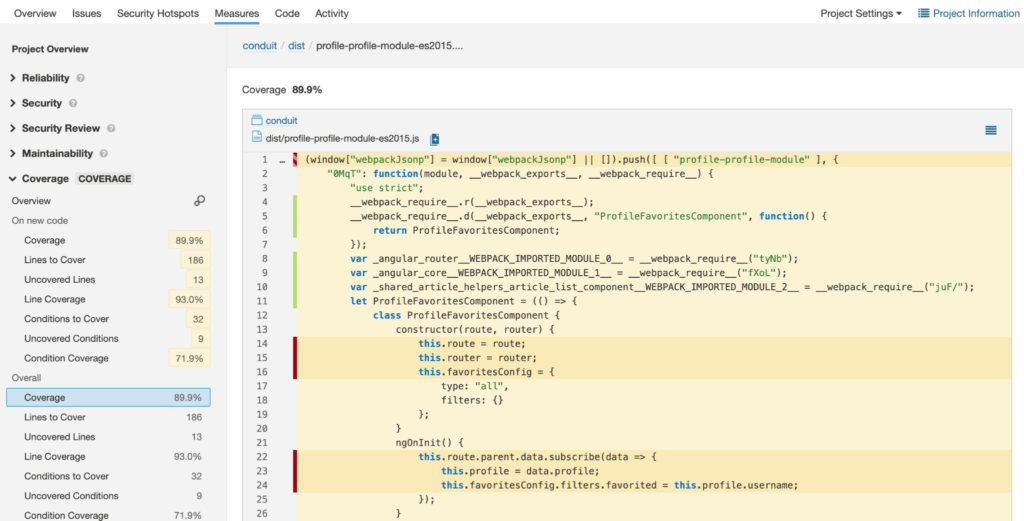
Metrics are shown on the right and on the left a specific file is displayed. The vertical coloring just to the right of the line numbers indicates the coverage assessment. The striped red line annotation means partially covered, red line not covered and green covered (exercised).
Challenges in Achieving Good Code Coverage
Despite of being a valuable measure, organizations lack the will and resources to implement comprehensive code coverage. Why is it so?
When There is a Scheduling Issue
There are times when the business team ends up over-committing and the delivery runs on an extremely tight schedule. This is the result of bad management practices. The teams end up developing and testing by cutting corners at different stages resulting in putting metrics like code coverage at a lower priority. Little do they realize that today’s “unrealistic” fast delivery may result in high maintenance and extra cost/effort tomorrow.
Lack of Proper QA Ops Process
Organizations need to have a seamless exchange of information between all the teams. Any tests that are written without a detailed requirement analysis are brittle. Any modifications in requirements or design need to be communicated to the test development team to keep the test base in sync with the development.
Now, imagine if this does not happen because proper QA Ops were not in place.
- The test team may still be working on some outdated sections.
- The development team may be still writing code that may not be required anymore The test team may still be working on some outdated sections.
Neither of the above-mentioned scenarios is ideal when it comes to code coverage.
Tests not Aligned with Business Goals
When there is too much focus on code coverage, then the testing team may end up writing tests to cover the modules/sections which do not hold much business value. This is an indicator that indicates that the organization needs to improve its QA Ops practices.
Legacy Code – Dead Code
Huge projects span months with multiple teams working on them. The code base is large and keeps evolving as requirements keep adding/changing. This results in certain sections which made sense earlier but are no longer important. Such legacy code or unused (dead code) is a burden on the testing team. Covering it fully is a time-consuming process and removing it may inadvertently impact some functionality.
Untested Condition Branches
Creating tests for all the conditions for all possible combinations of input parameters is a herculean task.
Ensuring Comprehensive Code Coverage
It is a good idea to include code coverage metrics for the Continuous Integration flow of your CI/CD pipeline.
Code coverage may not be a perfect testing metric but it provides actionable data that when used with other testing metrics helps in significantly improving overall quality. It requires minimal human intervention if done using reliable testing tools.
Webomates CQ is an ingenious testing tool that encompasses 14 AI-based testing tools which are used right from the test case estimation to test case generation, execution, and test result analysis.We offer code coverage as an optional add-on to our AI test automation.
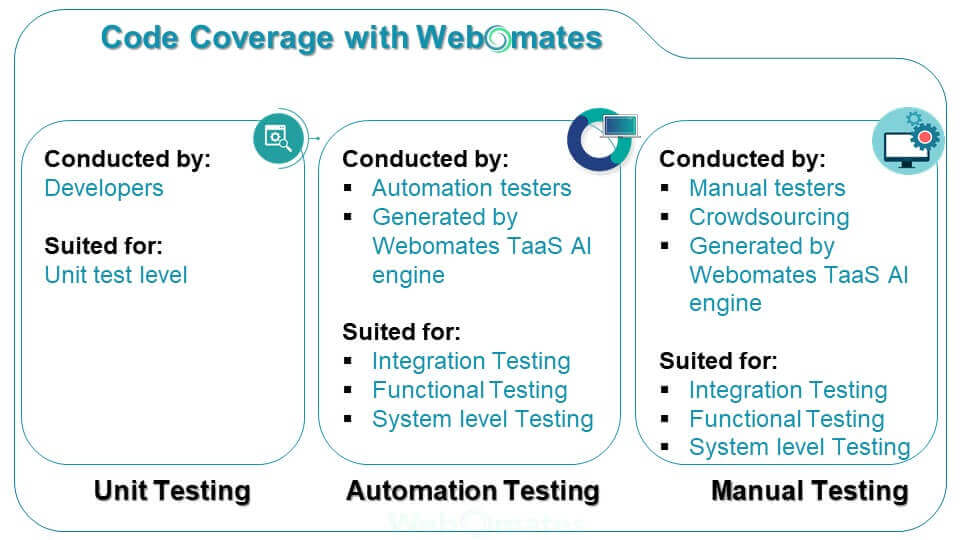
Webomates CQ enables code coverage assessment of Web-based front-ends (Javascript) as well as backend APIs and services (Java, .NET, NodeJS, Python, etc.) during automation testing. CQ supports robust and widely supported coverage tools such as Istanbul for Javascript and Jacoco for Java.
CQ offers both UI and API testing. The application backend may be tested directly by API tests, or indirectly by the UI, or a combination of both to improve coverage.
CQ integrates with the code coverage feature in the popular static code analysis tool SonarQube. The tool enables customers to view coverage metrics for a new code added, overall code, by package/directory and by file. Metrics are available by lines, branches and conditions. Additionally, customers can inspect source code that is visually tagged as covered or uncovered.
The code coverage data is provided as an input into a SonarQube static code analysis scan. Typically, this is orchestrated in a CI/CD pipeline. Quality gates can be set as part of an SDLC process, for example, a LOC coverage threshold could be required before promoting a build to production.
CQ automation testing with code coverage can augment a customer’s existing unit test coverage practice, improving the total code coverage in all forms of testing. The coverage data may even be overlayed or merged to a reporting tool such as SonarQube.
Get code coverage with no effort with Webomates by clicking here and scheduling a demo, or reach out to us at info@webomates.com
If you liked this blog, then please like/follow us Mark or Webomates
Tags: AI Testing, Artificial Intelligence, Code Coverage, Code Coverage Criteria, DevOps, Intelligent automation, Test Automation, What is Code Coverage?

Leave a Reply